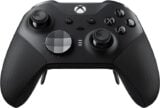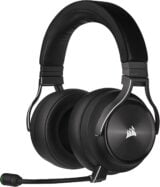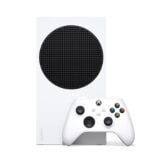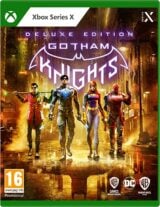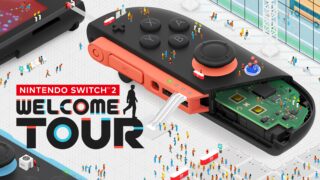Review: The xScreen is a great but pricey way to play Xbox Series S on the go
This useful portable screen lets you play your console without a TV
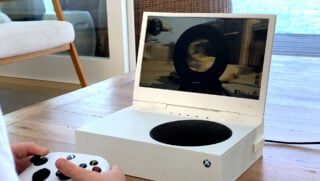
Anyone who’s been around the block long enough will surely remember the plethora of portable screens available for early 3D consoles such as the PSOne and Nintendo GameCube.
For a while it felt like any time a console got small enough, some enterprising peripheral firm would decide it could theoretically become portable if they slapped a display on it.
Australian company UPspec Gaming has dragged the presumed-dead trend kicking and screaming from 2002, and come to the conclusion that the smaller of Microsoft’s new-gen systems, Xbox Series S, could do with a portable display of its own.
The idea behind ‘Xscreen’ is that players can take their Series S with them on trips, to a friend’s house or even just a different room in their own home, and continue to play without a TV nearby.
Of course, this would be moot if the xScreen didn’t actually deliver satisfying performance, but this is actually an impressive little piece of kit, albeit a pricey one.
We’d imagine that UPspec is desperately praying that Microsoft never changes the form factor of the Series S even slightly with future hardware refreshes, because as it currently stands the xScreen fits like a glove.
The peripheral connects to the console via both the HDMI port and one of the USB ports at the back, and then has two latches at the side. These are screwed in to make the unit secure, and each latch has three tiny hooks at the end, which pop satisfyingly into three of the vent holes on the side of the Series S.
The xScreen has a gap at the back, so players can still plug in the Series S power supply. This gap also gives access to the storage expansion slot, for anyone who owns an official Seagate storage expansion cards, but those are the only slots exposed.
This brings up one of the xScreen’s drawbacks, however: it blocks every other port on the back of the console, even those it doesn’t use.

Although the xScreen only uses the HDMI port and one USB port, it covers up the second USB port on the back and the ethernet port, meaning if you plan on playing with a wired connection you’re out of luck.
The latter is perhaps less pressing because the portable nature of the product suggests you’re more likely to be using a Wi-Fi connection, but the fact it uses one USB port and blocks a second means you’re only left with one.
As such, anyone who uses a USB hard drive to store games, and also plans to use a wired controller (be that for a second player or what have you) will either have to choose one or the other, or plug a USB hub into their console.
Assuming a single USB port is enough, though, the xScreen itself is a high-quality piece of hardware. Once you turn it on and change the Xbox’s display from 720p to 1080p (which only has to be done once), the quality is impressive.
“The picture is sharp and vibrant, while the screen also comes with the typical brightness and contrast controls which help you tweak it to get it looking just how you like it.”
The picture is sharp and vibrant, while the screen also comes with the typical brightness and contrast controls which help you tweak it to get it looking just how you like it.
The screen easily handles 60 FPS content with no obvious ghosting or noticeable input lag, and the whole thing basically feels like attaching an LCD PC monitor to your Series S (because that’s essentially what it is).
Here’s a video showing it in action, but do bear in mind that the flickering you see on the screen is a result of the slightly different refresh rate of the camera’s recording, and isn’t visible on the screen when it’s actually in use:
The xScreen also comes with two speakers built in, which can go surprisingly loud. Naturally, you can adjust the volume, but the setting isn’t quite as granular as we’d like. Depending on the game, it seems to go from mute to reasonably loud without many stages in between.
There’s also no headphone port on the xScreen, though this is presumably because UPspec expects you to use your controller’s headphone port for that instead.
The fact that the xScreen draws its power directly from the Xbox’s USB port is a particularly useful touch, because it means you don’t need a second power supply. As long as you can find a single plug socket for the Series S, you’re good to go.
It also appears to be fairly energy efficient. While hardly a scientific test, we played Forza Horizon 5 solidly for about three hours and the screen was still cool to the touch – unlike the Series S vent, of course.
Speaking of the vent, the xScreen’s included manual stresses that if you plan to keep the xScreen attached to your console when it isn’t in use, you should turn off the console’s Instant-On feature and change it to Energy Saving mode.

Even when it’s off, the Series S continues to use up a decent amount of power when it’s on Instant-On mode, because it’s continually downloading updates and otherwise remaining in a suspended state so it can quickly start up again.
As such, the vent does still expel some heat in this mode, and if the xScreen is closed over it there’s nowhere for that heat to go, which could potentially damage either the console or the xScreen.
Although xScreen recommends switching to Energy Saver mode, we’d go one further and suggest you completely unplug the console’s power supply while the screen is closed, just to be on the safe side.
The xScreen can also be set up to communicate with the console using HDMI-CEC, which means it can control the console’s power. With this turned on, closing the xScreen lid will instantly shut down the Xbox too. This is a nice touch which could avoid overheating if a younger family member finishes their session and closes the lid without turning the console off.
“With HDMI-CEC on, closing the xScreen lid will instantly shut down the Xbox too. This is a nice touch which could avoid overheating if a younger family member finishes their session and closes the lid without turning the console off.”
Accessories are also available for the xScreen, though most of these are a little superfluous. You can purchase different coloured latches for the side for $9.99 each, but we personally think the standard white ones look best because they feel like part of the original hardware.
You can also buy a console stand for $24.99 which simply consists of two small plastic wedges that the console fits into. These let you stand the whole thing up vertically like a comically oversized Game Boy Advance, but while it’s sturdy enough, we’d question whether it’s really a better experience than simply laying the console flat as normal.
More useful is the carrying case, which is nicely padded and can hold both the console and the screen, making it very handy for transporting them. That said, at $59.99, you may be tempted to find a cheaper makeshift alternative like some bubble wrap and a laptop bag.

When deciding whether to recommend the xScreen, one thing should be clear – if you’re already looking at this and thinking “well, what’s the point of that,” then it’s almost certainly not for you.
The xScreen is designed for specific situations, and if those situations don’t apply to you then it’s a completely frivolous, pointless peripheral.
However, for anyone who regularly has family arguments over who gets to use the TV, or those who often visit their friends and want to be able to play online co-op games with them but only have one console and one TV, this could very well be the solution.
And naturally, those who travel regularly will also see the benefits in having a new-gen system that they can take wherever they like, as long as they have a power socket (and ideally a Wi-Fi internet connection).
“The xScreen is designed for specific situations, and if those situations don’t apply to you then it’s a completely frivolous, pointless peripheral.”
Ultimately, we’re extremely happy with what the screen offers, but it also has to be pointed out that it’s not cheap. At $249 it almost costs as much as the Series S itself, and that’s before taking shipping and potential customs charges into account.
This has to be something that would-be owners can see themselves using a lot in their lives if they want to justify the cost, otherwise, it may just be worth the extra inconvenience in, say, finding a hotel room whose TV accepts an HDMI input.
As long as you can find situations where the xScreen will prove beneficial to you, however, it’s a superbly crafted and well-engineered peripheral which produces a perfectly satisfying experience.
The xScreen is far from a budget device, but it does what it does exceptionally well. Regular travellers who wish they had their next-gen system with them will find it works an absolute treat, as long as they can justify the cost
- Picture quality is excellent
- Fits so perfectly, it feels first-party
- No need for a second power supply
- At $250, it certainly isn't cheap
- Leaves you with only one USB port
